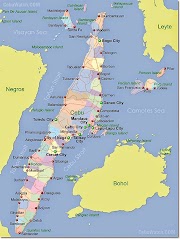Super Typhoon Egay: The Powerful Storm heading to the Philippines
Super Typhoon Egay continue to intensity as it moves closer to the Philippines. According to the latest release from PAGASA, Egay will become a Super Typhoon and will move to extreme northern Luzon.
A super typhoon is a tropical cyclone with maximum sustained winds of 150 mph (241 kph) or stronger. Super typhoons are the most powerful type of tropical cyclone, and they can cause widespread damage and loss of life.
Super typhoons can cause a wide range of damage, including:
- Strong winds that can knock down trees and power lines, causing widespread power outages.
- Heavy rains that can cause flooding and mudslides.
- Storm surges that can inundate coastal areas.
How can I stay safe during a super typhoon?
If you live in an area that is prone to super typhoons, it is important to be prepared. Here are some tips for staying safe during a super typhoon:
- Listen to local weather reports and follow the instructions of emergency officials.
- Stay indoors during the storm and away from windows.
- If you must go outside, wear sturdy shoes and clothing that will protect you from the wind and rain.
- Bring a battery-powered radio and flashlights with you in case the power goes out.
- Have a plan for what you will do if you need to evacuate your home.
Super typhoons are powerful storms that can cause widespread damage and loss of life. If you live in an area that is prone to super typhoons, it is important to be prepared. By following the tips above, you can help to keep yourself and your family safe during a storm.
Additional information
- The strongest super typhoon on record was Typhoon Haiyan, which struck the Philippines in 2013. Haiyan had maximum sustained winds of 195 mph (314 kph) and caused widespread devastation, killing over 6,000 people.
- The Philippines is one of the most vulnerable countries to super typhoons. The country is located in the western Pacific Ocean, where these storms are most common.
- There are a number of things that can be done to reduce the risk of damage from super typhoons. These include building stronger infrastructure, improving early warning systems, and educating people about the risks.









0 Comments